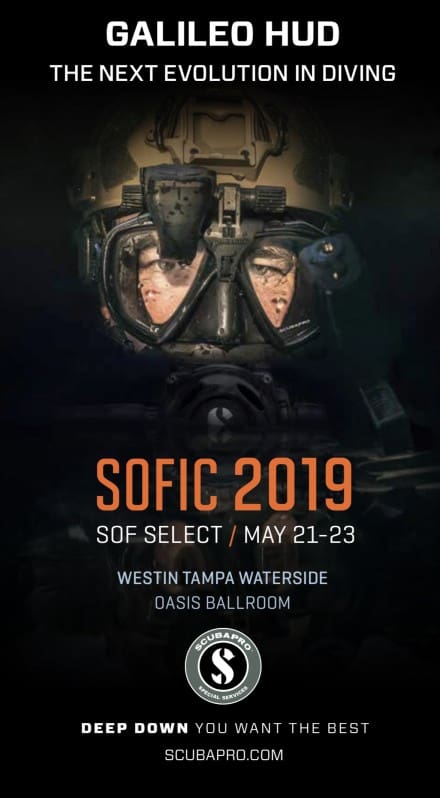

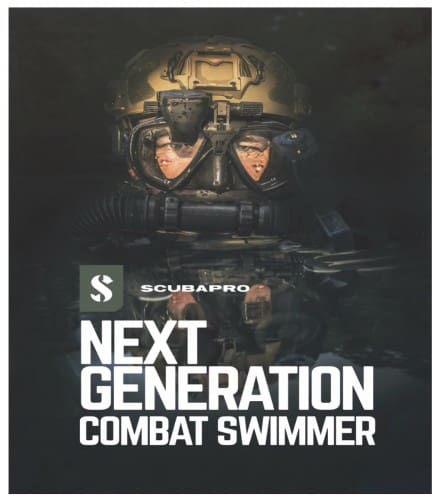
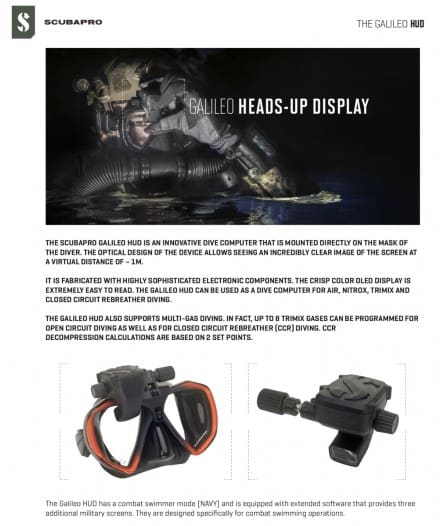
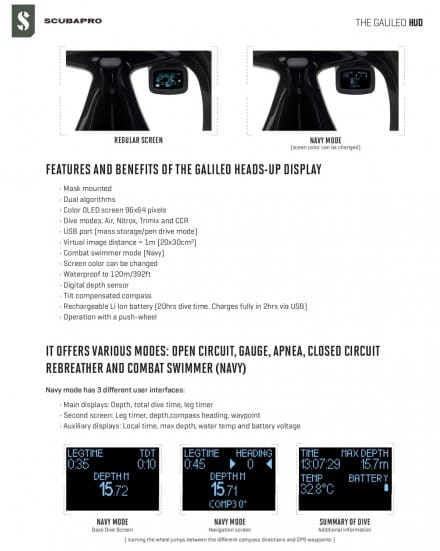
For more information please contact ecrazz@clannfive.com
The inability to clear ears not is one of main reasondivers can’t start a diver or finish it if they cannot clear at the start. It is easy to clear/equalize your ears almost all the time. Even the best of divers can have trouble clearing on a dive. But with a few of these technic’s I hope that you won’t have to end a dive because of ear problems. Some of these also work for skydiving or flying. It is always a good practice to try and clear your ears before you even get into the water. At your dive brief, the Dive Supervisor should ask everyone if they canclear their ears.
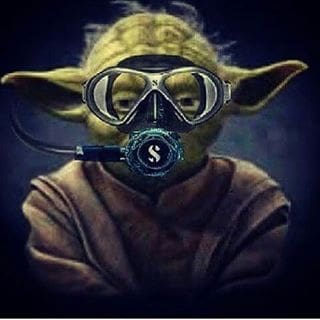
Valsalva
This is the most common way to equalize. I am sure you learned it when you first started to swim. This method teaches you to pinch your nose so that no air can pass through your nostrils, and then gently “blow” your nose. This forces air into your inner ear space, equalizing the pressure within to the outside pressure often with an audible popping or clicking sound. The key to this is the word “gently.” Don’t blow your eardrums out before you dive.
Frenzel
To perform this maneuver, you thrust your jaw forward. This slight shift in your natural anatomy will cause the Eustachian Tube to straighten and open, thus allowing gases to travel in the direction of higher pressure to lower pressure until full equilibration occurs.
Voluntary tubal opening
Try yawning with your mouth closed by contracting the muscles in the back of the roof of your mouth and throat while pushing your jaw forward and down. Tensing and stretching the muscles pulls the eustachian tubes open.
Toynbee
The Toynbee technique of clearing your ears is to pinch your nose and try to swallow. This tenses the muscles in the throat and soft palate to pull the tubes open, while your tongue compresses air against them. This results in a decreased pressure against the middle ear and Eustachian Tube, which will open in response.
Lowry
This is a combination of Valsalva and Toynbee. Pinch your nose and then blow against your closed nose while swallowing at the same time.
If your ears are particularly stubborn while trying the equalizing methods tilt your head from side to side or look up towards the surface. It helps stretch the folds surrounding the eustachian tubes making it easier to open them.
Medication
First, it is not recommended to take anything before you dive. If you have to dive and do take a decongestant, make sure it will last for the duration of the dive.
Good Luck and I hope this helps.
Diving with a drysuit is a whole new dive experience compared to diving in a wetsuit. It is a different feeling being submerged in water, your body remaining dry. Drysuits offer many advantages, such as: exposure protection from the sun, as well as elements in the water, and drysuits can also be utilized as a redundant buoyancy device for added safety. If you’ve never attempted drysuit diving before, then this will be a great introduction to helping you choose your first suit. If you’re an avid diver, then there should be some nuggets in here to help improve your drysuit game.
Finding the Best Drysuit for You
Making the change from wetsuits to drysuits is a big step. Many people convert due to their regular diving in cold water (or being cold natured), or because they perform lots of dives with long exposure times. Determining the suit that is best for you is the first step to ensuring that your transition to drysuit diving is a smooth one. Choosing a bad suit can ruin the entire sport of drysuit diving.
When choosing a drysuit, you should consider the following:
• The type of diving you do
• What amount of thermal protection you need
• Personal preference
• Cost
• Material
While the first four are pretty self-explanatory, the last one – material – may need a little more explanation. If you are going to be traveling with your drysuit, a trilaminate version may be the easiest because they are lighter and easily transportable. If you are looking for a suit that provides thermal protection and is more form-fitting, then you might prefer a neoprene suit. These are two of the top materials that drysuits are made of and that SCUBAPRO offers.
Neoprene Drysuits
Neoprene suits are beneficial in that they provide thermal protection, whereas with others, you wear additional undergarments. The neoprene suits are more form fitted, which require less air to be used in the suit and offer the diver a more streamlined suit. Neoprene suits are economical in the sense that they are typically less expensive, and eliminate the need to buy undergarments as well.
SCUBAPRO offers two neoprene drysuits, the Exodry and the Everdry 4. Both come in men’s and women’s sizing.
The Exodry offers a unique approach to drysuit design by fusing 4mm high-density neoprene with latex wrist and neck seals. This hybrid design is extremely effective, delivering minimal inherent buoyancy, maximum range of motion and an excellent sealing system. The Exodry is a smart choice for all types of diving and can be used with or without an under-suit.

The Everdry 4 offers the streamlined fit, comfort, and flexibility of a wetsuit, with the thermal properties and water-tightness of a drysuit. Equipped with smooth-skin, fold-under neoprene neck seal, and ultra-smooth wrist seals, the Everdry provides comfortable, watering tight sealing surfaces. Known for its comfort and extended wear, the Everdry 4 fits like a glove, offers an excellent range of motion, and most importantly, keeps body heat in and cold water out.
Trilaminate Drysuit
Trilaminate suits are some of the most lightweight suits on the market. Trilaminate suits are also one of the strongest suits offered. Build with a Trilaminate material; these suits are more resistant to deterioration, are fast drying, and easy to repair. Trilaminate suits are designed to be worn with thermal undergarments. You can wear as many or as few thermal layers as you prefer, making it a good choice for a diver that does both cold and warm water diving. Our choice in Trilaminate suits is the Evertech Dry Breathable Drysuit. It is a premium Trilaminate drysuit designed for avid divers and loaded with features. Built with a breathable fabric blend, this suit is comfortable both above and below the surface. Stitched and waterproof taped seams provide extra protection from the water.
Additionally, a front entry diagonal zipper and Si-Tech ring seal system for wrists and neck allow you to change seals quickly. This suit is both comfortable to wear and easy to maintain. You will also find a telescoping torso, top, crotch strap, and bungee system within the waist to tailor the suit to your body shape.

Accessorizing the Drysuit Diving Experience
When it comes to accessorizing your drysuit, many additions are built into the suit – from the padding to pockets. The small details are essential details to consider when choosing a drysuit. Pockets are handy for storage of equipment, and every SCUBAPRO suit comes with at least one large utility pocket. Each pocket houses a D-ring and water draining grommets. These items might be helpful to store a spare mask, reels, wet notes, or surface marker buoys.
Some additional features you may find on your SCUBAPRO suit are attached boots or socks, removable blue suspenders to hold your suit in place, heavy-duty kneepads, and I-safe straps to secure your wrist computers. Each suit always comes with an anatomically shaped hood, repair kits, zipper wax and a versatile carry bag that also doubles as a changing mat.
Drysuit Gloves
When diving in cold water, your hands are typically what get cold first, and can potentially end your dive due to the discomfort. This is why dry gloves are a great addition to your drysuit if you commonly perform dives in frigid water. Dry gloves are designed to allow air inside, making a considerable difference in regulating temperature, much like a drysuit. SCUBAPRO offers two types of dry gloves, the Easydry Pro and the Easy Don Dive Glove.

Both gloves are manufactured from high-quality, vulcanized latex, which gives them high elasticity, plus makes the gloves very resistant to punctures and tears. The elastic latex cuff seal ensures that the glove is waterproof, while still providing access for air to enter the glove. The textured surface enables the wearer to maintain a non-slip grip on instruments, valves or regulator. They come with an inner glove for added thermal protection.
Wetsuit Gloves
Whereas many drysuit divers chose to dive with dry gloves, many others prefer neoprene gloves. Neoprene gloves still allow your hands to get wet, while the neoprene foam offers thermal protection. Many divers prefer wet gloves over dry as they vary in thickness and can provide better dexterity. SCUBAPRO carries dive gloves from 1.5mm up to 5mm, for all your diving needs.
What to Wear Under Your Drysuit
One of the beauties of diving in a drysuit is being able to control the amount of thermal protection you want. As previously stated, in a Trilaminate, suit you have the room to layer as much or as little undergarments as desired. With the neoprene suits you are more limited by space; however, the suit itself provides warmth. Our preferred undergarment is the SCUBAPRO Climasphere.
The Climasphere is our undergarment of choice for drysuit diving. This thermal wear keeps you warm with a low profile two-piece insulation system. You can wear one or both pieces under your drysuit, at depth, for total comfort and warmth. The garments are breathable and windproof, making them a perfect surface interval ensemble while on the surface. Designed with neoprene wrist and ankle cuffs, with thumb loops and stirrups, they’ll both enhance warmth and prevent ride-up when climbing into your drysuit. The Climasphere is also one of few undergarments that are washable; however, we recommend you air-dry them not to deteriorate the materials.
The HYDROS PRO is a true breakthrough in dive comfort and convenience. The moldable Monprene®, adjustable fit and multi-attachment points combine to make this the most customizable and comfortable BC ever. Winner of the 2016 Red Dot award for product design. Interchangeable straps, a packable design and an included backpack with room for your entire dive kit make the HYDROS PRO perfect for any destination and any dive.
Durable Monprene® construction means ultra durability. The HYDROS PRO also stands up to UV, chemicals, and abrasion — without showing typical signs of wear. And a modular construction makes repairs — even from remote locations — a snap. It’s a BC for life.

When you are wearing the HYDROS PRO, you won’t even know it’s there. The HYDROS PRO molds to your specific body shape, and has been designed with body grip gel, providing extreme comfort and stability. Near-Zero inherent buoyancy means less lead. And, thanks to a back inflation, smart air system you can dive in any position.
A 2-in-1 BC The HYDROS PRO includes both the Trav-Tek straps and a fully integrated weight system. So, with a quick switch of clips, you can transform the HYDROS PRO from a harness travel BC to an integrated weight BC. Now you only need one BC for both local diving and travel.


Customize and Accessorize – Easily add, remove, or replace weight systems, bungees, D-rings, accessories and pockets to make the HYDROS PRO truly your own. With a wide range of mountable accessories and kits, your options are endless — and can quickly be changed based upon the dive and conditions.
Travel Friendly The HYDROS PRO goes everywhere with you. Instant dry, lightweight and compact, with a unique smart-pack design, the HYDROS PRO also comes with a customized backpack designed to fit your entire dive kit on your back.
The HYDROS PRO comes in seven colors, perfectly matched to SCUBAPRO suits, masks and Seawing Novas. Separate color kits are also available so you can change up your dive style whenever you want.
Specialized Fit for Women-Smaller air bladder. Shorter inflator hose. Curved shoulder straps that fit perfectly. Experience the difference of diving with a more thoughtfully designed BC for women.
Perfect For
• Instructors
• Tech Divers
• Travel Divers
• Female Divers
• Young Divers
• New Divers
• Dive Training
Ultra Durable: Patented Injection Molded Monprene® Gel Harness is extremely resistant to UV, chemicals and abrasion. The fabric-free harness uses no velcro or zippers.
Instant Dry: Ideal for travel due to less water retention and lower post-dive weight.
“BC-4-Life” Modular Design: Customizable to add/remove weight systems, straps and pouches. Extended lifespan due to simplified repairs. Virtually every component, including buckles, can be replaced without stitching.
3D Ergonomic Design: Conforms to your body shape for maximum comfort.
Lightweight: Advanced materials keep weight low.
Neutrally Buoyant: Near-Zero inherent buoyancy requires less lead, resulting in better buoyancy control and much more enjoyable diving.
Body Grip Gel: Prevents BC from shifting and riding up.
Dual-Compound Backplate: Provides the ultimate in stability and comfort. Single tank band system allows for easier assembly.
Torso Flex Zone: Auto-adjusts to your torso length for excellent comfort and freedom of movement.
Articulated Shoulder Straps: Allow straps to adjust to your body shape to achieve a snug fit.
Kit-Up Assist: Holds shoulder straps open for easy donning.
Cross-Flow Channel: Unrestricted internal airflow reduces air trapping for enhanced maneuverability and easy deflation at any angle.
2-Stage Inflation: Tri-bungee system controls air distribution to maintain a compact shape under water and high lift capacity at the surface.
Dorsal Weight-Wing: Anti-abrasion and instant dry. Optimal “Outboard” trim pockets.
Buckle Weight System: Simple, safe and reliable quick-release buckles offer a fixed location for easy one-hand operation.
Multi-Mount Accessory Matrix: Multiple D-Rings and mounting points for a knife + light + SMB + hoses + crotch strap and much more.
Smart-Pack Design: Folding shoulder and waist straps pack into the wing, creating an unbelievably compact package for easy transport and storage.
Available with Balanced Power Inflator or AIR2 alternate air source.
SCUBAPRO’s G2 Dive Computer considers heart rate, skin temperature, breathing rate (workload) and water temperature when calculating diving profiles. Its Advanced Uwatec algorithm programs up to 8 nitrox/trimix mixes to handle any recreational or technical diving scenario.

The F2 uses color (user selectable) to help rapidly convey information. The G2 also offers up to 50 hours of dive time per charge abd includes a Includes half-compass rose and bearing memory.
The first mention of combat swimmers appears in the chronicles of the Greek historian Herodotus ca 450BC. The Persian king Xerxes used divers to retrieve goods off of sunken ships. They were also used for ship repair and reconnaissance of harbors and channels.
Almost every Navy throughout history has had some form of combat swimmers. They have been used to smuggle goods in during the siege of Syracuse during the Peloponnesian war. The Spartans and Athenians were one of the first to employ combat swimmers, but history usually credits Alexander the Great in his famous siege of Tyre (Lebanon) in 332 B.C. He used “demolition divers” to remove obstacles from the harbor. Aristotle reported that Alexander himself made several dives in a crude diving bell to observe the work in progress. They were also used to cut the anchor lines of Roman ships by the Byzantines in 320 BC. The Byzantines replaced the lines with their own and pulled the Roman boats into the harbor ending a 3-year siege. The Romans then replaced all their anchor line with steel chains.
The U.S. started using Combat swimmer at the birth of our country. They were used during the revolutionary war to set fires and sink British ships. They were also used in the Civil war by both sides for sabotages and scouting. The U.S. didn’t really use combat swimmers again until WW2. Although some Americans did service with specified dive units of our allies in WW1. Those men would go on to help set up the units we used in WW2.
The combat diving mission was the same in World War II as it had been in previous wars: to remove obstacles from enemy waters and to gather intelligence. The Navy’s Underwater Demolition Teams (UDT) were created from bomb disposal experts and SeaBees (combat engineers) teamed together in 1943 to devise methods for removing obstacles that the Germans were placing off the beaches of France.
There where more than one combat swimmer/diver unit for the U.S. Navy in WW2. To name a few where the Navy Scouts and Raiders unit, Underwater Demolition Units (UDT), Navy Combat Demolitions Units (NCDU) and the OSS Maritime Unit. The OSS MU was on the cutting edge for U.S. combat swimmer/ divers. They where the first to use the Lambertsen Rebreathing Unit (LARU), an early underwater breathing device. The Lambertsen unit permitted a swimmer to remain underwater for several hours and to approach targets undetected because the LARU did not emit telltale air bubbles. Dr. Christian J. Lambertsen, then a U.S. Army captain, developed the Lambertsen for the MU. They also developed or used several innovative devices, including an inflatable surfboard, a two-man kayak, and limpet mines that attached to the hull of a ship.
The first UDT combat mission, wherein the Pacific. It was a daylight reconnaissance and demolition project off the beaches of Saipan in June 1944. In March of the next year, preparing for the invasion of Okinawa, one underwater demolition team achieved the exceptional record of removing 1,200 underwater obstacles in two days, under heavy fire, without a single casualty.
Diving apparatus where not extensively used by the UDT during the war. No suitable equipment was readily available to them. UDT experimented with a modified Momsen lung and other types of breathing apparatus, but not until 1947 did the Navy’s acquisition of Aqua-Lung equipment give impetus to the diving aspect of UDT operations. The trail of bubbles from the open-circuit apparatus limited the type of mission in which it could be employed, but a unique SCUBA (self-contained underwater breathing apparatus) platoon of UDT members was formed to test the equipment and determine appropriate uses for it.
UDT-21 (now SEAL Team 4) is credited with accepting the first official surrender on mainland Japan of WW2. Here the Commanding Officer LTCmdr Clayton of UDT-21 receives the first sword surrendered to the U.S. on mainland Japan. When he returned to the ship, he was ordered to return it so they could surrender to General MacArthur (just one more thing in a long list, that makes him one of the worst generals in history.)

At the end of WW2, most of the special maritime units where dissolved, all except a hand full of UDT teams. In the Korean Conflict, the Frogman started to come out of the water more and more. They where assigned targets like destroying bridges and other direct action missions.
In 1962, President Kennedy established SEAL Teams ONE and TWO from the existing UDT Teams to develop the Navy’s Unconventional Warfare capability. The Navy SEAL Teams were designed as the maritime counterpart to the Army Special Forces “Green Berets” with their primary focus on Direct Action missions. They deployed immediately to Vietnam to operate in the deltas and thousands of rivers and canals in Vietnam and effectively disrupted the enemy’s maritime lines of communication.
The SEAL Teams’ mission was to conduct counter guerilla warfare and clandestine maritime operations. SEALs also advised and trained Vietnamese forces, such as the LDNN (Vietnamese SEALs). Later in the war, SEALs conducted nighttime Direct Action missions such as ambushes and raids to capture prisoners of high intelligence value.
The SEALs were so effective, that the enemy named them, “the men with the green faces.” At the height of the war, eight SEAL platoons were in Vietnam on a continuing rotational basis. The last SEAL platoon departed Vietnam in 1971, and the last SEAL advisor in 1973.
In 1983 all UDT teams where turned into SEAL teams (SEAL Team 4 and 5) and SEAL Delivery teams (SDV 1 and 2). All branches of service have Combat Swimmer/Divers. In the Army, Rangers and Special Forces (Green Berets) can go thru Army combat diver school in Key West. The Air Force has a combat diver course for all ParaRescue and Combat Controllers. As both groups get assigned to work with all branches of Special Forces, they have to know how to dive as well. The Marines also have a Combat dive course that Marine Raiders and Recon personal attend.
Explosive Ordnance Disposal units. All branches also have EOD units. They are as old as the combat swimmer unit and have always been a big part of every military operation. Draper Laurence Kauffman, the man credited with starting the UDT, and being the first U.S. frogman was first an EOD officer with the British at the start of WW2. One month before Pearl Harbor he returned to the U.S. and joined the Naval Reserve. EOD personnel are some of the smartest people on the battlefield today. They are right there in the fight with all Special Forces and conventional units.
The mission of the combat swimmer has not changed much since it started around 450 BC. Combat swimmers still conduct special reconnaissance missions of beaches and harbors. They can climb out of the water to destroy something or even grab someone off a beach. The only thing that has changed is the technology that is available to them, but the basic combat swimmer skills will always be the same. Just about every country in the world is accessible from the water so the need for a combat swimmer will never go away.
This famous fin, with its durable rubber construction and distinctively beefy shape, has been seen on dive boats, research vessels and in the world’s most remote dive locales since 1965, and it’s still the fin of choice among a host of professional divers the world over. The Jet Fin set the standard for power and durability when it was ?rst introduced over 50 years ago. Today, tech divers, deep divers, military divers, commercial divers and dive instructors, as well as old-school recreational divers, still strap on a pair of Jet Fins before hitting the water.
SCUBAPRO sold over 100,000 units in the first few years. That was an amazing feat in those days and set the standard for dive fins. We took the concept and proceeded to popularize the fin with the US Navy and other commercial diving operations. The fact that Jet Fins have been almost exclusively adopted by the Navy and the commercial diving sector speaks volumes about what type of diver would benefit from them – someone who needs thrust, durability, control and convenience. Its hard to not like a fin that Thomas Magnum and TC used when they dove on Magnum PI. Just saying.
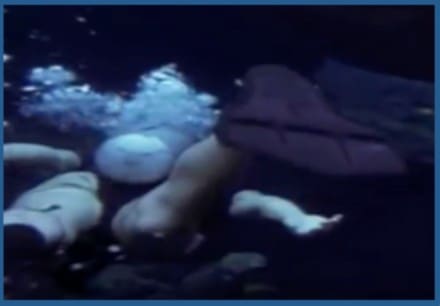
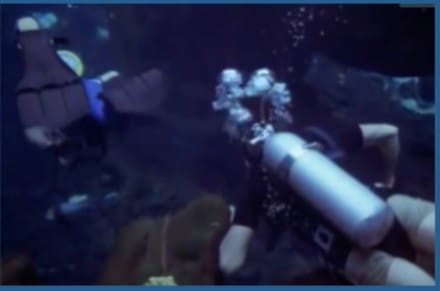
-Rubber construction is known for its durability, promising a lifetime of use. The Jet Fins are molded from one piece of rubber which makes them very durable and vertically indestructible. This will cut down on any maintenance that you will have to do on the fins, or the likely hood that you might damage them, meaning you will have them for many years to come. Jet Fins are made by using only one single compound which is rubber, molded in one piece and therefore unable to have “component failure” being as there are no screws, welds or connections to break as happens so often with modern fins. The Jet Fins are also flexible enough to provide excellent thrust, stiff enough to transfer all the diver’s leg energy into pushing the water backwards and robust enough to take literally any harsh conditions a diver can throw at it.
-The Proven vented design. Just below the foot-pocket, allows water to flow through the blade, reducing drag on the weaker upstroke, while enhancing trust and power on the down stroke. Many divers have their pair of SCUBAPRO jet fins for decades and literally swear by them. They are perfect for the frog kick and other kicking maneuvers.
-The Jet fin is also very compact. This feature is a must in confined spaces like cave, wreck divers and piers. The Jet Fins are broad and short, which means divers, are able to avoid kicking each other and the ocean floor.
The Jet fin comes in, black, camo, red, orange, yellow, white green and pink. We can also make special orders if needed.
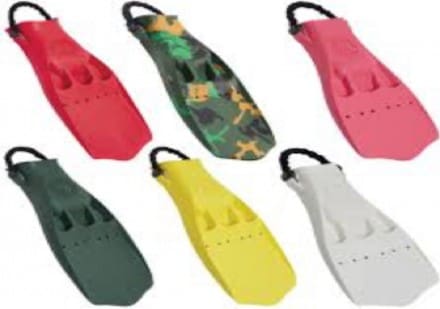
-The jet fins weighing about 5-7 lbs, and might not be suited for all divers but Mention “JET FIN” to virtually anybody who has a dive card or has gone to a military dive school and they’ll know exactly what you’re talking about. (I know memories of flutter kicks with them on, are running thru your head)
SCUBAPRO now offers two styles of Jet fins and two versions of heel straps.
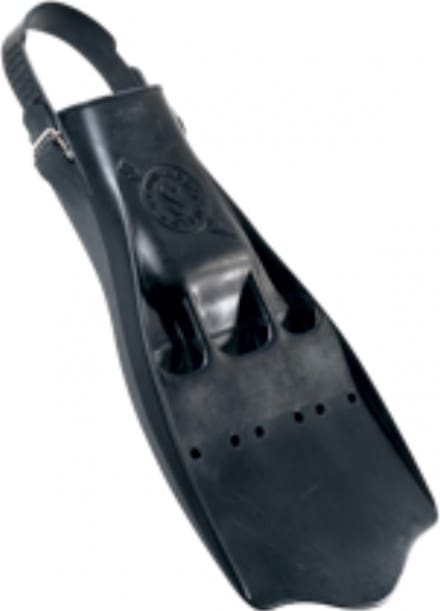
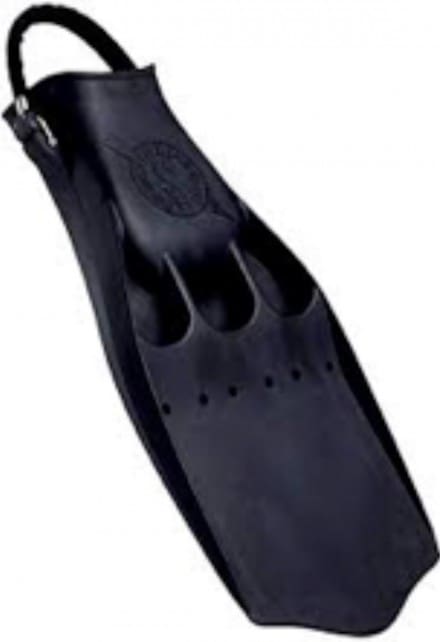
The original adjustable fin strap and the stainless steel spring heel. The original fin with the standard adjustable fins strap is still Made in the USA. The other version comes with a rugged stainless-steel spring heel strap that can lasts forever and makes donning and doffing as easy as can be. The steel spring was invented by cave divers that needed a fin strap that could last in some of the toughest places on earth and was quickly adopted by the military and other professional divers worldwide. The spring can be put on any of the jet fins.
SCUBAPRO has two styles of Jet fins available. With or without a hole on the blade. Each fin includes a pairing hole that allows the fins to be hung or stored together, minimizing the possibility of misplaced or mismatched fins. It also make coming out of the water on a beach or climbing a ladder easier. You can also attach the fins to you wrists or back with the SCUBAPRO fin keepers or carbineer and 550 cord will work.
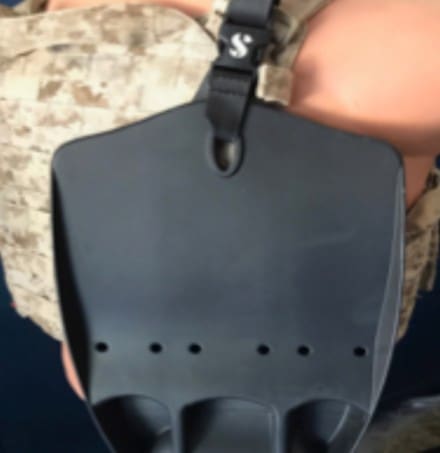
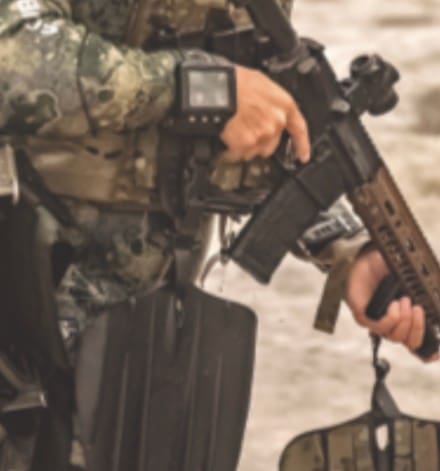
The Jets are renown for its power and its durability. They can last a life time and with proper care. They don’t really get sun damaged, salt eroded, chlorine discolored, travel battered, coral gouged or split. They are the strongest pieces of equipment that you will ever own. We had a retired master Diver that wanted to get a new pair as the ones that he had received in navy dive school in the 60s where getting a” little old” as he said. He called SCUBAPRO and asked about buying a new set. We told him we would give him a free pair. We asked if we could put the ones he has in our museum. He gave us a very polite “hell no I am not giving away my Jet fins”. We gave him a new set and he when home a happy man with two pairs of Jet fins.
When you’re diving with JET FINS, you are diving into a long line of history.